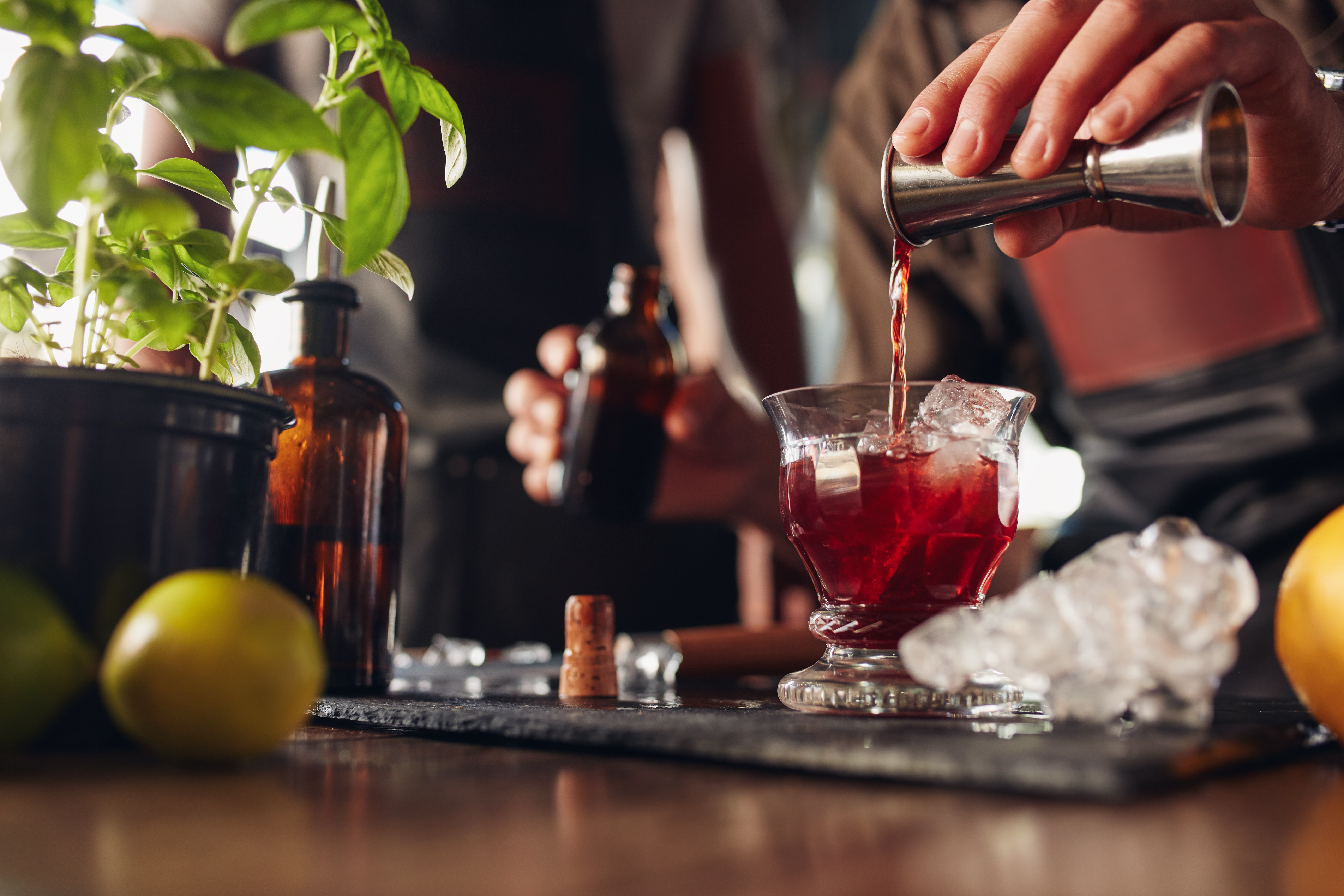At the time of writing this article, we're on the cusp of the summer season — a period traditionally linked with relaxed drinking and vibrant social gatherings. While summer is typically associated with an uptick in alcohol consumption, driven by longer days and warmer weather, it's equally important to cater to those who opt out of drinking. Offering a variety of non-alcoholic options can enhance the experience for everyone, ensuring that all guests can enjoy the festive atmosphere, regardless of their drinking preferences. This inclusive approach acknowledges the growing trend towards mindful consumption while accommodating the diverse needs of your clientele during the busy summer months.
Non-alcoholic (NA) beer, wine and spirits are on the rise, both in the number of offerings in the market, but also in the volume of purchases. According to IWSR Drinks Market Analysis, volumes have grown on average 20 percent per year in the U.S. since 2017.
Driven by heightened consumer demand, it's one of the fastest-growing segments of the beverage alcohol industry. One that has major suppliers jumping on the train to earn a slice of the pie.

Non-Alc Doesn’t Just Benefit Suppliers, It Benefits The On- and Off-Premise, Too
For on- and off-premise businesses, there is an opportunity to cash in on this growing industry segment. Ninety-four percent of consumers who purchase non-alcoholic products also purchase alcoholic ones. Even further, 1 in 7 (14 percent), have nonalcoholic alternatives (i.e. non-alcoholic beer, spirits or cocktails) when visiting the on-premise. Of that segment, 24 percent range from ages 21 to 34.
From a business perspective, non-alcoholic offerings are no longer seen as taboo. A growing number of bars nationwide have introduced mocktails into their cocktail programs, even making space on their shelves and fridges for zero-proof spirits and non-alcoholic beer and wine. In a quickly shifting landscape, bars can capitalize on the rising demand from their guests by investing in their NA beverage programs, opening new revenue possibilities in the process.
How Bar and Retail Businesses Can Capitalize on the Rise of Non-Alcoholic Offerings
The increased demand for NA offerings provides new opportunities for bar owners, breweries and retail businesses. But it also opens up a new set of challenges. How do you appeal to those who abstain without alienating those who don’t? What areas can you focus on to provide more NA options to your guests? Here are a few ways to capitalize on the emerging category.
The Opportunities and Challenges for Bar & Restaurant Owners
- Diversify the drink menu with non-alcoholic offerings. Whether it’s a section dedicated to mocktails or zero-proof spirits, creating real estate on your menu for your NA program is essential to building awareness of your offerings. Download our guide to building a better cocktail menu to learn about tips and strategies for introducing new sections into your menus.
- Collaborate with local NA beverage producers to offer exclusive and unique options. As more producers enter the NA market, product offerings grow. It’s not just big brands entering the chat. Look at what smaller, local producers have to offer in your area. Are there local breweries making NA options? What about a start-up zero-proof spirit brand? Collaborating with local producers ties your business to the community and shows your dedication to propping each other up.
- Train bartenders to craft appealing non-alcoholic cocktails and recommend them to guests. Bars should always have options for non-alcoholic drinks. Ensure your bartenders know how to make them and inspire them to treat them with the same creativity and care they would for alcoholic cocktails. If you don’t already have a mocktail program or menu in place, invest in this area of your beverage program to sell more and provide alternatives to those who abstain.
- Host tasting events and promotions to introduce customers to non-alcoholic alternatives. Education is key here. Have sales reps hold a seminar for your team so they can learn about the category and product. In turn, they can educate guests. Invite reps or brands to hold a tasting event at your bar to educate customers. Host an NA cocktail competition or new product launch event for local producers to drive further awareness.
- Consider offering non-alcoholic beverage pairings with your food menu to enhance the dining experience. Why not? Fine dining restaurants worldwide have started offering non-alcoholic pairing options to appeal to a wider range of consumers and diversify their offerings. If some of the world's most celebrated restaurants are doing it, why shouldn't you?
Maximizing Non-Alcoholic Wine and Spirit Sales in Retail Stores:
- Make room on your shelf for NA wines and spirits. Create an eye-catching display dedicated to non-alcoholic wines and spirits, making them easy for customers to find.
- Train and educate your staff. Educate staff about the different non-alcoholic wine and spirit options you offer and their unique characteristics so that, in turn, they can educate your customers and provide them with the best options.
- Diversify your wine and spirit subscription selections. Include non-alcoholic wine and spirits in curated wine packs or subscription services for something new for interested customers.
- Hold NA wine and spirit-tasting events. Invite reps or producers of non-alcoholic wines and spirits to host tasting events and educate consumers about the benefits and quality of their products.
As the industry adapts to this emerging market, producers and consumers will benefit from the diversification of non-alcoholic offerings. New technologies and production processes will produce higher quality, tastier products. In turn, bars will churn out more creative and innovative NA cocktails, and adoption will increase both on- and off-premise, opening new revenue streams for businesses.



Comments